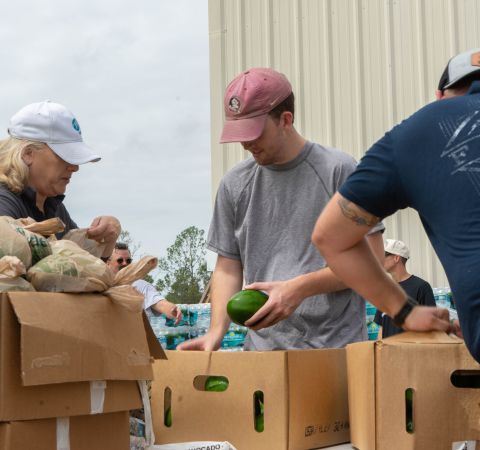Child hunger keeps kids from reaching their full potential
Getting enough food is an important first step to ensuring kids can achieve their goals. However, the reality is that 1 in 5 children across America don't have enough to eat.

Facts about child hunger
We all deserve to have enough food to eat without worrying about if we can afford it. At Feeding America, we are working to make this a reality.
-
 Nearly 14 million children faced hunger in 2023.
Nearly 14 million children faced hunger in 2023.According to the USDA , one in every five children is unsure where they will get their next meal.
-
 Families with children are more likely to face hunger.
Families with children are more likely to face hunger.Raising kids can cost a lot of money. Buying clothes, getting food, and paying for school can all add up fast and make it tough for families to meet all their needs.
-
 Black and Latino children are nearly twice as likely to face hunger.
Black and Latino children are nearly twice as likely to face hunger.Many families, regardless of their race, have a hard time affording food. However, it happens more frequently to families of color because of discrimination based on race.
-
 Single-parent families are more likely to face hunger.
Single-parent families are more likely to face hunger.Managing expenses can be tough with one source of income. In 2023, 1 in 3 households headed by single moms and 1 in 4 households headed by single dads experienced food insecurity.
Causes of child hunger
There are many reasons why kids might not have enough to eat. Some of the common reasons include:
Low family incomes
Although parents and caregivers work hard to provide for their children, low wages make it difficult to have enough money to buy food.
Lack of affordable housing
Despite budgeting and saving, the high cost of housing can make it difficult for families with children to afford food and rent.
Racism and discrimination
Black people, Latinos, and Native Americans are more likely to face barriers to getting food.
Effects of child hunger
Hunger can affect children's health, development, and well-being. Some common effects include:
Poor academic performance
Children who experience food insecurity may have trouble focusing and learning in school.
Increased health problems
Kids who don't get enough food to eat face higher risks of health conditions like anemia and asthma.
Developmental differences
Hunger can change how a child's brain and body grow and affect their thinking, learning, and behavior.
Ending child hunger
When children have enough food, they can concentrate on important things like doing well in school, playing sports, and graduating.

Child food programs
We support programs that provide food to children after school, over the weekend and during the summer.

SNAP application assistance
We help families understand and apply for SNAP benefits, so they have extra money for buying food.

Advocating for food programs
We support policies that give food to people facing food insecurity through programs like SNAP and TEFAP.
